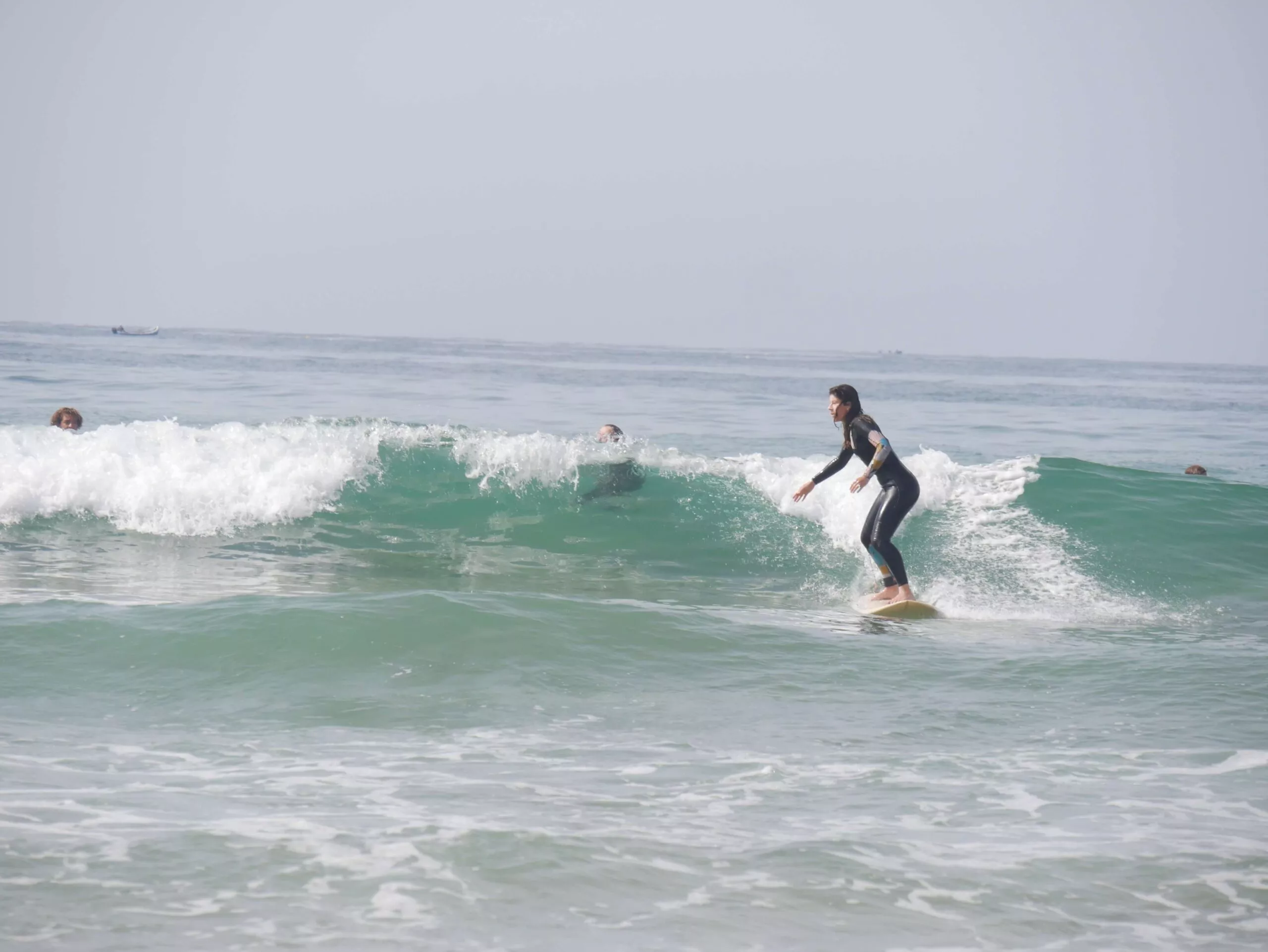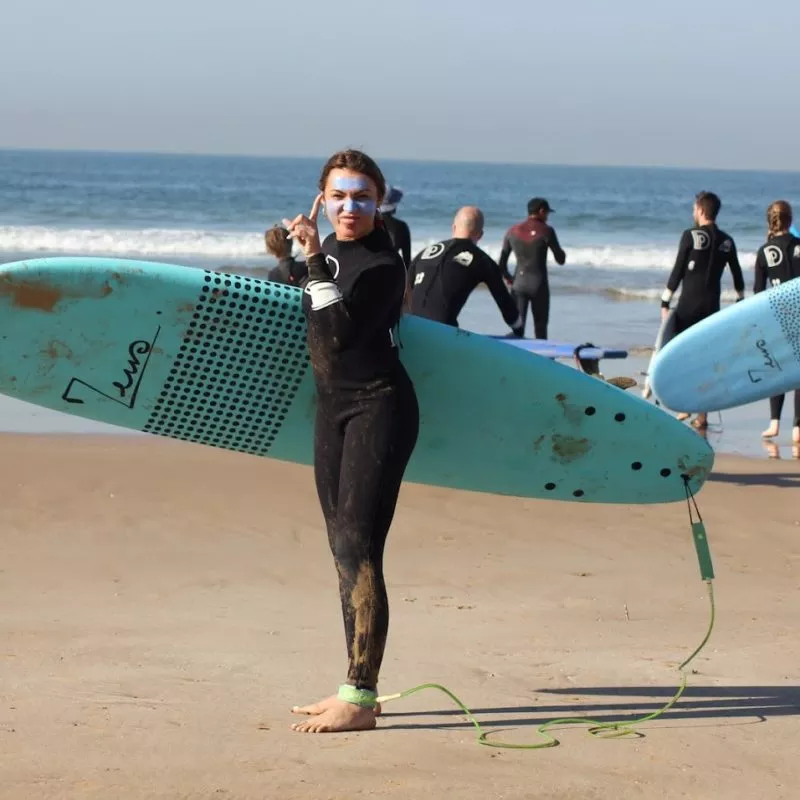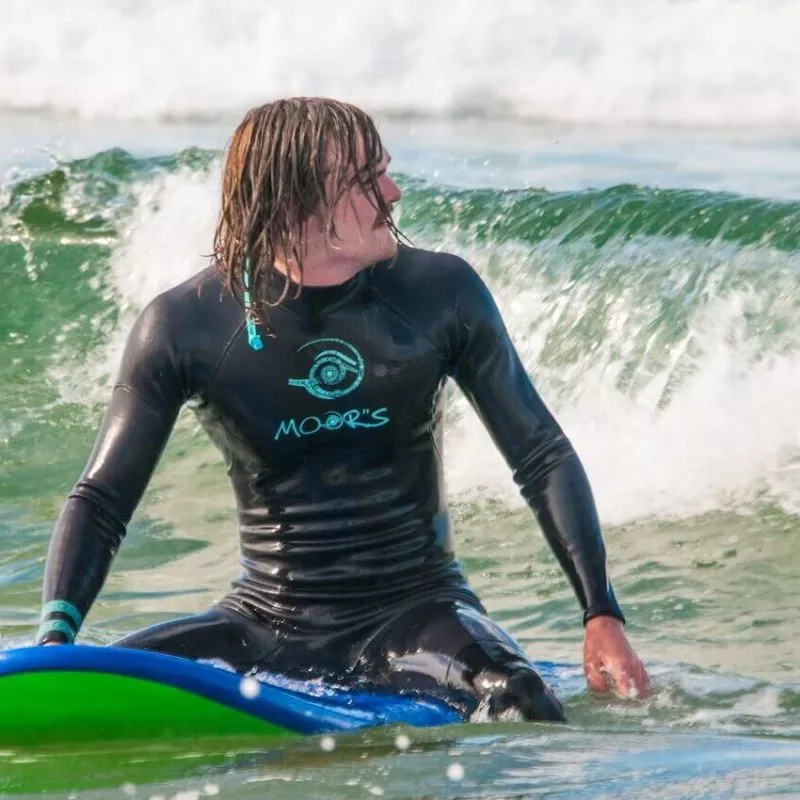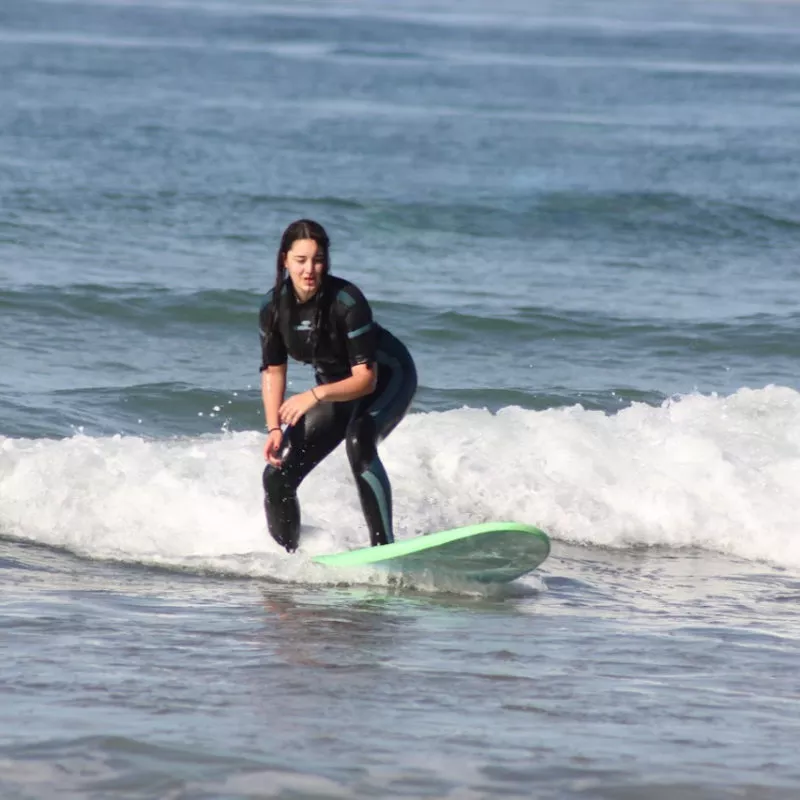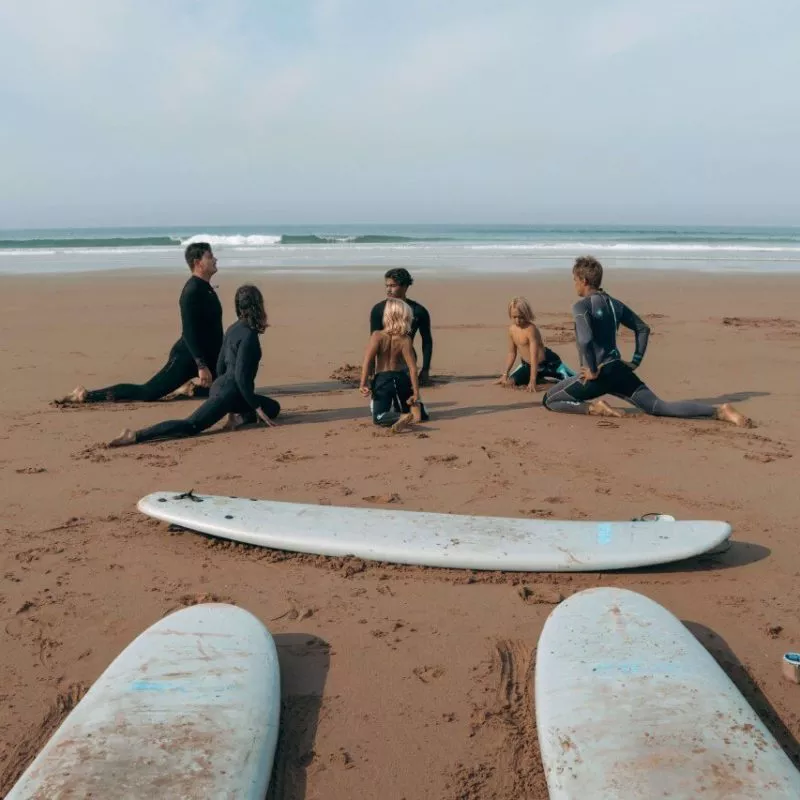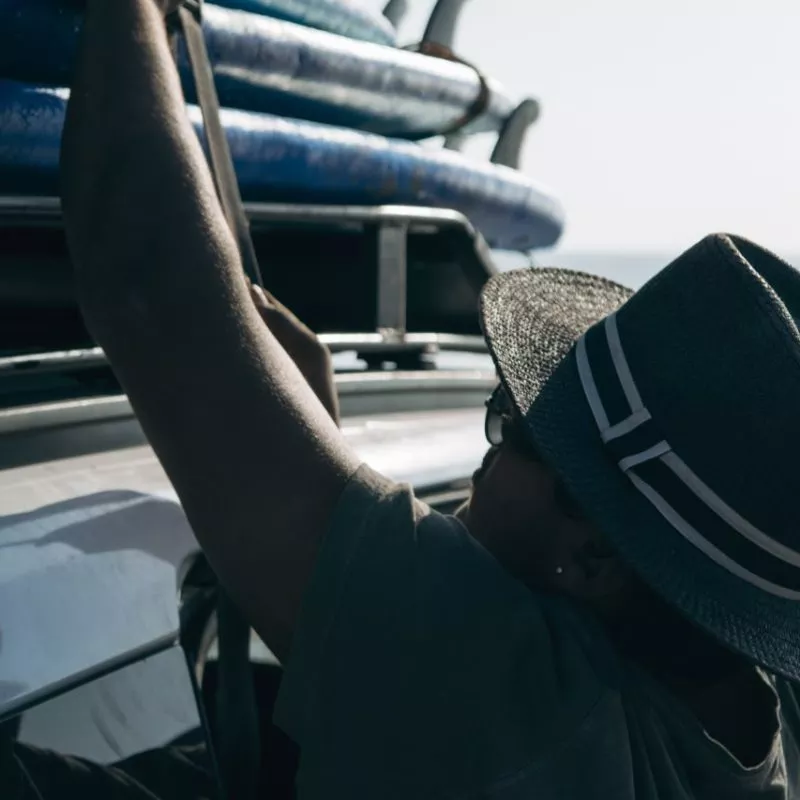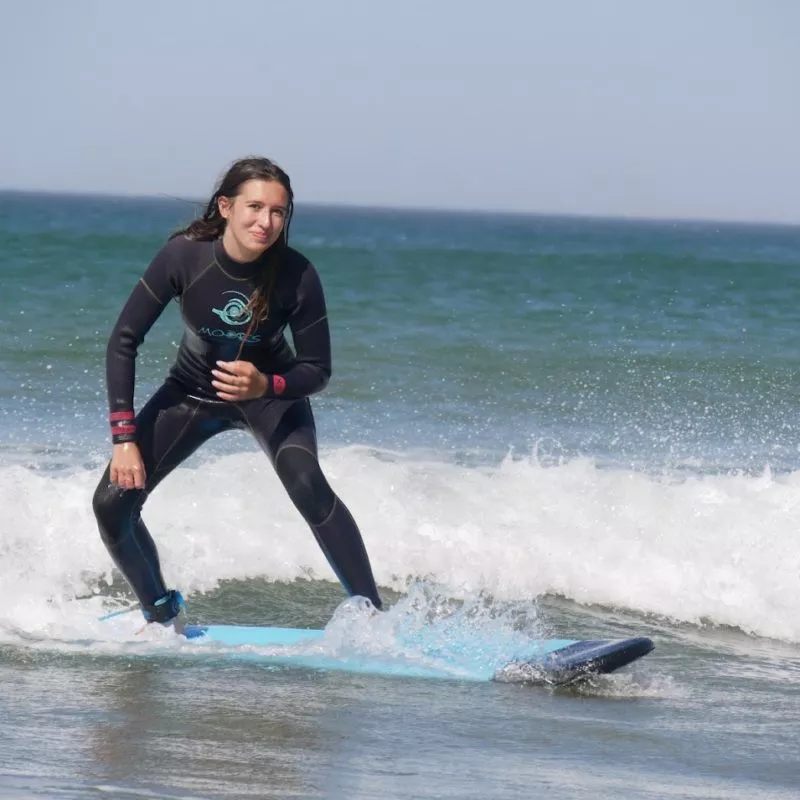Surfing is a sport with ancient roots and a truly global journey. Long before Surf Morocco became a catchphrase for wave seekers, the practice of riding waves began in the warm waters of Polynesia and Hawaii. Over centuries, surfing spread across the world from the beaches of Waikiki and California to the breaks of Australia and eventually found its way to the Atlantic coast of Morocco. This article traces the rich history of surfing, exploring its Polynesian origins, its 20th-century boom, and how Morocco emerged as a world-class surfing destination.
Ancient Origins: Surfing in Polynesia and Hawaii
Surfing’s story begins in the Pacific Islands. Polynesians were riding waves at least as far back as the 12th century, as evidenced by ancient cave paintings of surfers. In these islands especially Hawaii surfing (known as heʻe nalu, or “wave sliding”) was more than recreation; it was a central part of the culture and even religion. Hawaiian chiefs and kings were often the most skilled surfers, commanding the best boards and exclusive rights to the finest waves. Commoners could gain honor by demonstrating prowess on the waves, and surfing skills could even influence social status. Beyond sport, it served practical and spiritual purposes: Polynesian warriors used surfing to train for battle, building strength and courage on the crashing waves. Rituals surrounded every aspect of surfing from prayers for good surf to ceremonies for shaping boards from sacred koa or ʻulu wood. In short, surfing was embedded in daily life in ancient Hawaii, revered as the “sport of kings.”
20th Century: Surfing Spreads Worldwide
By the early 20th century, surfing had survived suppression by missionaries in Hawaii and was poised for a global revival. A key figure in this resurgence was Duke Kahanamoku a Hawaiian swimming champion and one of the era’s finest surfers. After winning Olympic gold in 1912, Duke traveled the world giving surfing exhibitions, introducing the once local Hawaiian sport to places like California, Australia, and beyond. His charisma and skill captured international attention, and he is often credited as the “Father of Modern Surfing.”
In the decades that followed, surfing culture blossomed in California and Australia. Lighter surfboards (thanks to innovations like hollow wooden boards and later foam-and-fiberglass designs) made the sport more accessible. By the 1950s and ’60s, a craze had taken hold: Californian teenagers rode waves at Malibu, and popular media fueled the stoke notably the 1959 film Gidget, which introduced surfing to millions and kicked off a booming surf industry. Surf music (like the Beach Boys) and beach party films celebrated the newfound “California surf lifestyle,” bringing surfing into the mainstream. Meanwhile in Australia, beach towns from Sydney to Brisbane were developing their own vibrant surf scenes, spurred in part by Duke Kahanamoku’s famous 1914 surfing demonstration in Sydney.
This mid 20th-century surf boom also ignited a spirit of adventure. Surfers began roaming the globe in search of uncrowded waves. The classic documentary The Endless Summer (1966) exemplified this wanderlust it showed two Californians circling the world to surf perfect waves, famously unveiling South Africa’s flawless Cape St. Francis to the world. Inspired by such tales, surfers expanded their horizons to every coastline that had waves, from Europe to Asia and Africa. By the late 1960s, surfing was truly worldwide and it was only a matter of time before the wave riding revolution reached North Africa, setting the stage for surfers to surf Morocco.
Riding the Atlantic: How Surfing Came to Morocco
Morocco’s introduction to surfing came in the 20th century, as the sport’s global spread reached North Africa. The earliest waves in Morocco were likely ridden in the early 1960s by American servicemen stationed at a military base in Kenitra (north of Rabat). U.S. Navy and Air Force personnel based there brought surfboards and began surfing the beach break at Mehdia Plage, to the astonishment of local onlookers. This little known chapter sparked Morocco’s surf revolution, preceding the more famous influx of wandering surfers later that decade.
By the mid-to-late 1960s, Morocco was firmly on the map for adventurous wave riders. Drifting down through Europe and into Morocco, groups of Californian and European surfers found their way to the country’s southwest coast. In particular, Taghazout Bay a once sleepy fishing village near Agadir became a focal point after rumors spread of its perfect point breaks and 300 days of sunshine. Traveling in camper vans along the era’s “hippie trail,” these pioneers arrived to find world-class waves peeling along the Atlantic reefs. In Taghazout, they discovered gems like Anchor Point and Killer Point long, right-hand reef breaks that could rival the surf in California or Hawaii. Some of these early surfers camped on the beach for months, even years, effectively embedding themselves in local communities. They taught a few curious Moroccan youths to surf, traded boards and knowledge, and many fell in love with the relaxed coastal lifestyle. A number of the foreign surfers ended up staying in Taghazout for good marrying local partners or opening small businesses thus planting the seeds of a homegrown Moroccan surf culture.
Through the 1970s, surfing gradually took hold among Moroccans. Early on, equipment was scarce – the first visiting surfers had only a handful of heavy longboards. But by the mid-1970s, newer shortboards and wetsuits were being imported regularly into Taghazout and nearby towns. As gear became more available, more local youth joined the fun. By the early 1980s, Morocco’s reputation had spread international surf magazines featured its uncrowded, excellent waves, and films began to showcase the Moroccan coastline. Surfers realized that Morocco offered a 3,500 km stretch of diverse breaks – from the powerful reefs near Safi and Rabat in the north, to the mellow beach breaks around Essaouira, all the way down to desert points by Sidi Ifni in the far south. The phrase “Surf Morocco” was becoming a reality, as the country earned its place on the world surf map.
Morocco’s Surf Culture Boom: From the 1990s to Today
By the 1990s, surfing was no longer an underground novelty in Morocco it was blossoming into a true culture. As the sport gained local popularity, a generation of Moroccan surfers and entrepreneurs came of age. Surf shops and schools opened in coastal cities like Agadir, Casablanca, and Essaouira, often started by passionate locals or returning expats eager to share the stoke. In 1994, Morocco founded its own national surfing federation to organize competitions and nurture talent. Around the same time, the Moroccan government recognized the potential of surf tourism. A major initiative, Plan Azur (launched 2001), invested in developing seaside resorts notably transforming Taghazout from a backpacker haunt into a planned “surf village” with improved roads, accommodations, and amenities. The goal was to create jobs and turn spots like Taghazout Bay into sustainable tourism hubs.
Surf lessons on a Moroccan beach camels lounging by the shore illustrate the blend of local culture with surf tourism. These efforts paid off, and by the 2010s, Morocco was firmly established as a premier surf destination. The number of surf camps and schools exploded growing from just a handful in the 1990s to over 80 surf businesses along the Taghazout Tamraght coast by the late 2010s. Towns that once saw only seasonal drifters now thrive year-round on surf tourism. Notably, the prime surf season in Morocco runs from late fall through winter (roughly October to March), when consistent North Atlantic swells hit the coast. Unlike Europe or North America, Morocco’s winter climate remains mild, with water temperatures around 16–18 °C and pleasant air temperatures reinforcing its reputation as a winter surfing paradise. This seasonal advantage means that each winter, beaches from Tamri to Imsouane fill up with international surfers escaping the cold, eager to enjoy empty lineups and warm hospitality while they surf Morocco at its best.
Morocco’s surf scene today is a dynamic blend of local and international influences. A cadre of talented Moroccan surfers has emerged from big-wave chargers like Othmane Choufani to female champions such as Meryem El Gardoum who have pushed boundaries in a traditionally male dominated arena. International competitions now take place on Moroccan waves as well. For example, the World Surf League has hosted pro events in the country (the WSL Pro Casablanca is one notable annual competition), and recently Taghazout’s Anchor Point has featured on the Qualifying Series circuit. At the grassroots level, dozens of surf camps offer immersive “surf and stay” packages, and new surf hostels, yoga retreats, and board-shaping workshops continue to pop up in coastal villages. Crucially, this growth has been accompanied by an enduring respect for Morocco’s rich culture. Visitors are as likely to enjoy Berber tagine and mint tea in an oceanfront camp as they are to catch a sunset session at Anchor Point. The result is a distinctive surf culture that blends Moroccan hospitality and tradition with the laid-back camaraderie shared by surfers worldwide.
Morocco’s Surfing Hotspots
The beach at Taghazout, Morocco’s premier surf town, once a quiet village now lined with cafes, surf shops, and guesthouses catering to surfers. Today, Morocco boasts a wide array of surf spots that cater to all skill levels from mellow beach breaks to adrenaline pumping reef breaks. The coastline offers consistent swell and famously long rides (on the best days, waves here can peel for up to half a kilometer). While new surf discoveries continue to be made, several destinations have become pillars of Morocco’s surf scene:
- Taghazout: Morocco’s most famous surf town and the heart of its surf culture. Taghazout sits on a stretch of coast peppered with breaks from the legendary Anchor Point (a long, right-hand point break that put Morocco on the map) to nearby surf spots like Killer Point and Boilers reef. In winter swells, Anchor can produce powerful, world-class waves, drawing pros and veterans to its lineup. The town itself is lined with surf camps, cafés, and board-shops, buzzing with an international surf vibe each winter.
- Imsouane: A tranquil fishing village north of Taghazout, famed for its exceptionally long waves. Imsouane’s picturesque bay produces a peeling right-hand point break often touted as one of the longest rides in Africa. On a good swell, a surfer can cruise a single wave for hundreds of meters before kicking out near the sand. The gentle, rolling nature of Imsouane’s main break makes it ideal for beginners and longboarders, while a second spot nicknamed “Cathedrals” offers faster sections for advanced surfers. The laid-back town has a small but charming surf community and is an idyllic spot to unwind between surf sessions.
- Safi: This industrial port city hides a gem a heavy right-hand reef break that, when conditions align, produces dredging barrels to rival those in Hawaii or Indonesia. Considered one of Morocco’s most challenging waves, Safi Point (sometimes dubbed “The Garden”) can hold triple overhead swells and has delivered rides featuring some of the longest tube sections in the world. It’s a spot for expert surfers only, but it has cemented Safi’s name on the global surf map. When the surf is firing, Safi sees a pilgrimage of top local and international talent chasing arguably the best barrels in the Atlantic.
- Essaouira: A historic coastal town (and UNESCO World Heritage site) known for its consistent winds and beach breaks. Essaouira Bay offers a long stretch of sand with multiple peaks a forgiving surf spot that’s great for learners or intermediate surfers looking for fun, cruisy waves. Further south, the village of Sidi Kaouki provides a more exposed beach with punchier waves, and strong winds that make it popular for kite and wind-surfing. While Essaouira’s surf is not as famed as Taghazout’s, the town’s mix of culture (fortified ramparts, vibrant souks, music festivals) and surf-friendly coastline make it a unique stop on any Moroccan surf trip.
In just a few decades, Morocco has evolved from a blip on surfing’s radar to a core destination in the global surf community. The journey that led to Surf Morocco from Polynesian kings riding wooden boards to California beach parties to intrepid travelers finding epic point breaks at Taghazout is a testament to surfing’s universal appeal. It’s a story of cultural exchange and adventure, one wave at a time. And as Morocco’s coastline continues to welcome surfers of all stripes, its legacy in the surf world only grows richer, proving that the call of the ocean knows no borders.

